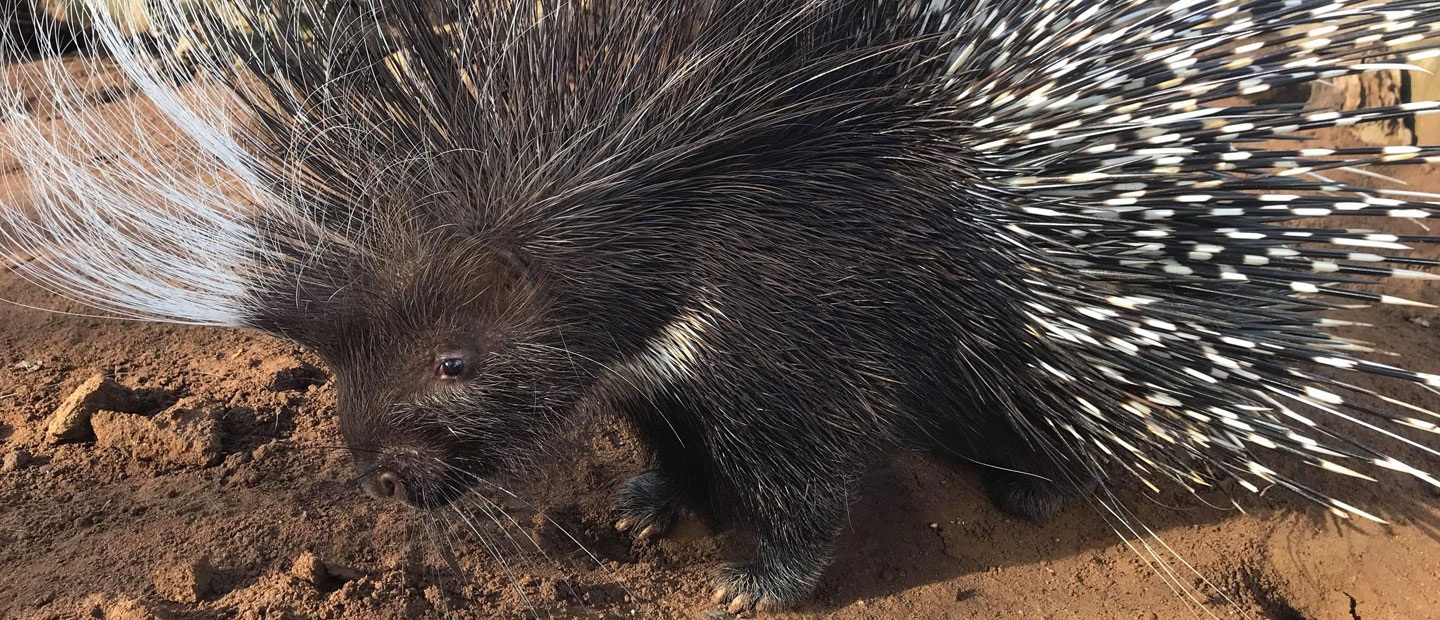Prickly characters!
Porcupines are prickly! They have about 30,000 hollow quills on their body, which are made of keratin, the same stuff your fingernails and hair are made of. Cape porcupines have the longest quills of all five species of porcupine and shedding quills is a normal process, just as it is with standard hair. New quills will start to emerge within a few days of another falling out. The hair on their back, sides and tail is soft.
You may have heard a rumour that porcupines can shoot their quills like spears – and although this is incorrect, porcupines will raise them when they are threatened to make themselves look bigger and threatening. Sometimes they will then turn and run backwards into their attackers, embedding their spines into their flesh. Ouch!
Cape porcupine are usually nocturnal, sleeping in burrows during the day and foraging at night.


